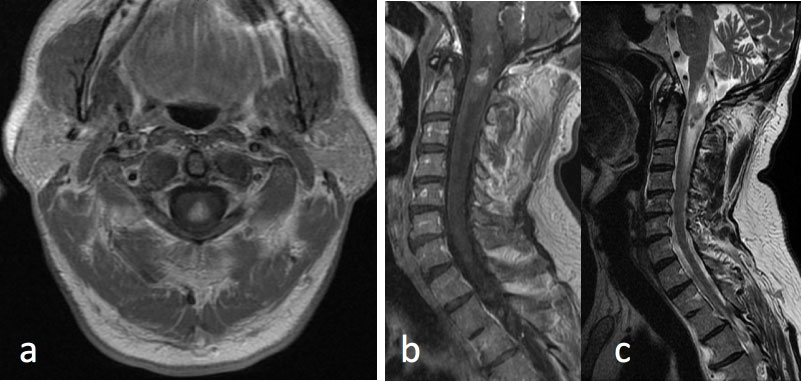
Overview
Ependymoma is a rare type of glioma that arises from ependymal cells lining the ventricles of the brain and the central canal of the spinal cord. It can occur at any age but is more common in children (intracranial) and in adults (spinal). Ependymomas can be benign or malignant depending on the grade and subtype.
WHO classification includes:
- Grade I: Subependymoma, Myxopapillary ependymoma
- Grade II: Classic ependymoma
- Grade III: Anaplastic ependymoma
Symptoms
- Brain-based tumors: headaches, nausea, vomiting, balance problems
- Spinal tumors: back pain, limb weakness, numbness, bladder/bowel dysfunction
- Seizures (less common)
Causes & Risk Factors
- Most are sporadic, no known direct cause
- Rare genetic syndromes (e.g., NF2)
- Slightly more common in males
- Childhood cases linked to chromosome 22 abnormalities
Diagnosis
- MRI of the brain and spine
- Biopsy or surgical removal for histopathology
- Molecular profiling (e.g., RELA fusion status for prognosis)
Treatment Options
- Surgical resection (main treatment, aim for complete removal)
- Radiation therapy (especially for Grade II and III tumors)
- Chemotherapy (used more often in children or when surgery/radiation isn’t feasible)
- Clinical trials for novel therapies
Prognosis
- Varies by tumor location, grade, and completeness of resection
- Better prognosis in spinal ependymomas
- 5-year survival: ~70% for localized tumors
- Recurrence is possible, requiring reoperation or additional therapy
Living with this Cancer Type
- Rehabilitation (physical, occupational, speech therapy)
- Long-term MRI surveillance
- Hormone replacement if hypothalamic/pituitary areas are affected
- Emotional and educational support (especially in pediatric cases)
Prevention & Screening
- No known preventative strategies
- Genetic counseling for families with inherited conditions like NF2
FAQs
Q: Is ependymoma malignant?
A: It can be either benign (Grade I) or malignant (Grade II/III), depending on subtype and grade.
Q: Can ependymomas spread?
A: They may spread via cerebrospinal fluid but rarely outside the central nervous system.
Q: Are children with ependymoma curable?
A: Many children achieve long-term remission with surgery and radiation.
Resources
- CERN Foundation (Collaborative Ependymoma Research Network)
- American Brain Tumor Association (abta.org)
- ClinicalTrials.gov
Understand Precision Testing
Learn how liquid biopsy and chemo sensitivity testing can personalize your treatment plan.
Make Informed Decisions
Gain knowledge to actively participate in treatment discussions with your healthcare team.
Improve Treatment Outcomes
Discover how precision medicine and metabolic therapies can enhance treatment effectiveness.
Start Your Educational Journey Today
Empower yourself with knowledge about precision metabolic oncology and take an active role in your cancer care journey.
Need More Information?
Our team of oncology experts is here to help you understand your diagnosis and treatment options.
